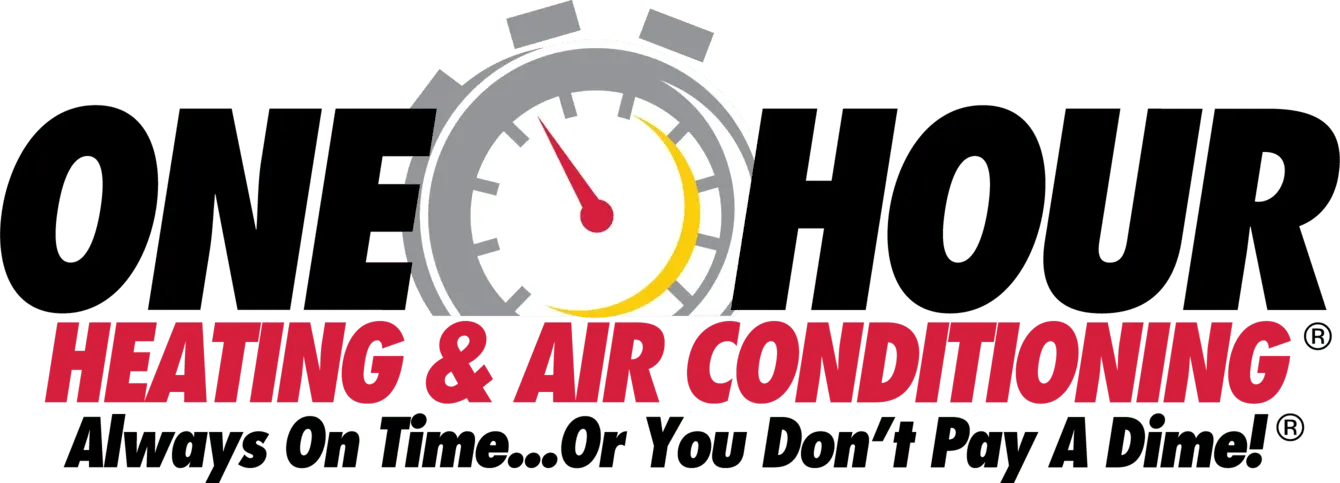Why Is My AC Unit Not Blowing Cold Air?
The AC (or heat pump) is running but no cold air; what’s happening? Follow these troubleshooting tips to find out why your AC or heat pump isn't blowing cold air and if it's time to call for professional help.
Why Is My Central AC Not Blowing Cold Air?
There are a few possible reasons your air conditioning unit isn't working.
Sometimes it’s as simple as adjusting the thermostat setting or reprogramming your smart thermostat to run your AC at different times of the day. For other, more advanced fixes, you'll need to contact your local One Hour Heating & Air Conditioning. Make sure regular AC maintenance is a part of your spring or fall home care routine!
When the air coming from your air conditioner or heat pump is room temperature at best, here are five troubleshoots you can use to identify the problem.
#1. Check Your Thermostat Setting
Start with the basics. Is your thermostat set to "Cool"? It may sound obvious, but our technicians have made this "fix" for many households! In most cases, someone changed the setting by accident.
Related: 3 Benefits of a Smart Thermostat Upgrade
#2. Check Your Air Filter
This is another common task homeowners tackle—usually every 1-3 months! Dirty air filters reduce airflow, which limits the effectiveness of your air conditioning unit and can damage it over time. Turn off the AC unit, locate your air filter, and inspect it. If it looks dirty, replace it and see if your AC unit is still blowing warm air. If it is, you're on to #3!
#3. An Obstructed Condenser Unit
Time to head outside and inspect your condenser unit. The condenser coil runs around the unit's periphery, usually protected by a removable cover or panel. It’s usually lined with thin, shiny metal fins. If these fins are blocked by dirt or grass, or covered by a tarp for protection, they can't draw in enough air. In the short run, this leads to warm air blowing through your home's vents and registers. In the long run, it can severely damage the unit or cause it to fail. Always inspect your exterior AC unit before starting it for the cooling season. And remove tarps or covers you may have used to protect it during the winter.
#4. A Refrigerant Leak
Inside all those coils is refrigerant. This chemical compound is designed to convert from a gas to a liquid and back as it absorbs heat from inside and releases it outside. A small refrigerant leak may not be noticeable for weeks, while severe leaks lead to an immediate decline in AC performance. Leaks and low refrigerant levels can cause:
- AC unit running longer than normal
- Increased utility bills
- AC unit blowing warm air
- Damage to the compressor
- System failure
Fixing refrigerant leaks requires handling harmful chemicals and must be addressed by a licensed HVAC professional.
#5. An Evaporator Coil Issue
The evaporator coil is located indoors, usually inside the furnace or in the fan coil cabinet if you have a heat pump. The evaporator coil is designed to remove heat and humidity from the air being forced through the coil. The evaporator coil is filled with cold refrigerant and can freeze up if the system isn't working correctly. Locate your evaporator coil and look for ice, frost, or signs of water on or near the unit.
Evaporator coils are complex and usually difficult to access; this is a fix best left to the experts!
Keep Your Cool When Your AC Unit Is Blowing Hot
There's never a convenient time for HVAC failure. When an AC or heat pump is blowing warm air due to a refrigerant leak or evaporator coil, always trust a professional HVAC technician to make the fix. Your local One Hour Heating & Air Conditioning is ready to help. Book online or call (800) 893-3523 today!
